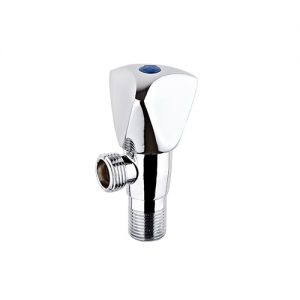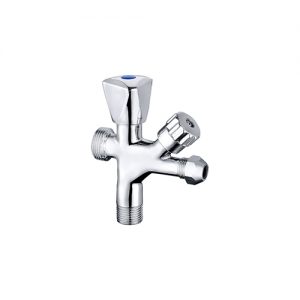Description
Ball Valve 1″
JX-0406
- Brass Ball Valve with air vent
- Size 1″
- Max work temperature; -10-110℃
- Max work pressure;30 bar
- Media; Water; Seawater
- 100% water pressure and leak tested
- Jiaxin Metals is your number 1 source for Quality fluid control Accessories.
- It comes with a 1-year warranty!
How do valves work?
How do heart valves work? Four heart valves control the flow of blood through the heart. They act as one-way doors, opening to let blood exit or enter a chamber, then closing to keep blood flowing backward. The tricuspid valve controls blood flow from the right atrium to the right ventricle.
What are ball valves used for?
A ball valve is a form of quarter-turn valve which uses a hollow, perforated, and pivoting ball to control flow through it. It is open when the ball’s hole is in line with the flow and closed when it is pivoted 90 degrees by the valve handle
Lock Ball Valves are available in both threaded and slip types. The threaded type has a male threaded end that screws into a female threaded port. The slip type has a female connector that slips over the male pipe connection. Lock Ball Valves are used in many applications, such as:
-Plumbing
-Heating
-Air conditioning
-Refrigeration
-Industrial processing
-Pumps and compressors
-Chemical processing
History: Origin of the brass Ball Valve
The brass ball valve is an essential component in the plumbing and engineering industries, and its origins can be traced back to the 1800s. Edwin L. Moen, a plumber from Wisconsin, invented the first ball valve in 1933 as a part of his patented invention of the single-handle faucet. Since then, it has become an important tool for many engineers working with liquid or gas flow systems.
The initial design was relatively simple; it consisted of a handle attached to a spherical plug containing one or more ports that allowed for fluid flow control when rotated 90 degrees. As technology advanced over time, so did the design and functionality of these valves; they now come in various sizes and configurations with many different materials used for their construction, including stainless steel, bronze, copper, plastic, and even titanium.
Benefits: Advantages of using this type of valve
A brass Ball Valve 1 is a type of valve used in plumbing and water systems. It has many advantages over other valves, making it an ideal choice for residential and commercial applications. This type of valve offers superior performance due to its durable construction and tight seals. It is more reliable than other valves and requires less maintenance, making it cost-effective to operate over the long term.
Brass Ball Valve 1s are designed with a ball-shaped handle that can be easily turned on or off by rotating the handle 90° in either direction. The handles also have an indicator arrow that lets you know which way to turn for open or closed positions. This makes for quick and easy operation compared to other types of valves requiring multiple turns before properly opening or closing.
Uses: Applications in different industries
Brass ball valves are well-known for their durability and resistance to corrosion, making them the ideal choice for various industrial applications. They are widely used in industries such as oil & gas, water treatment, chemical processing, and manufacturing – due to their ability to control flow quickly and efficiently. The brass ball valve 1 is now being used in increasingly global industries, providing reliable performance regardless of the environment or conditions.
They have become increasingly popular with engineers due to their robust construction and easy installation – allowing them to be adapted into existing systems without fuss. Brass Ball Valve 1s also provide excellent sealing capabilities and can be adjusted quickly. Whether used on land or offshore, they remain reliable even in harsh environments, making them a top choice among industry professionals.
Maintenance Tips: Cleaning and replacing parts properly
Cleaning and maintaining brass ball valves is essential to ensuring they last and function properly. A well-maintained valve can produce clean water with no contaminants, while one that has not been maintained can result in a lack of performance or break down entirely. With these tips, you’ll be able to keep your brass ball valve in top condition.
When cleaning the valve, use a soft cloth and warm water with mild detergent. Make sure to rinse the area thoroughly afterward so no soap residue remains. For tougher spots, use a nylon brush or scouring pad but avoid using anything abrasive like steel wool, as this will damage the surface of the valve. As for replacing parts, refer to the manufacturer’s instructions for the best results.
Conclusion: Summary of key points
In conclusion, the brass ball valve 1 is an excellent choice for various applications. It offers superior strength and durability due to its construction from solid brass. The valve design ensures tight shutoff and long-lasting performance, while its non-corrosive properties make it ideal for harsh environments. Additionally, the valve’s four-piece design allows it to be easily disassembled and reassembled for maintenance or repair purposes. Furthermore, its adjustable stem packing nut makes it easy to adjust the packing nut to maintain leak-free operation. Finally, this versatile ball valve is available in various sizes, making it suitable for various pipe configurations. In summary, brass ball valve 1 provides superior durability, easy maintenance and installation options, and adjustable parts, making it an excellent solution for almost any application.
Conclusion: Benefits of 1″ Brass Ball Valves
The conclusion of our article on 1″ Brass Ball Valves is that they offer users a wide range of benefits. Not only are they reliable and cost-effective, but they also have a long life span and require minimal maintenance. This makes them an ideal choice for commercial and industrial applications alike.
The valves are extremely durable, featuring high corrosion resistance to ensure longevity in any environment. They also feature bubble-tight shutoff capability with no leakage or drips, making them perfect for applications where precision performance is essential. Additionally, their easy operation allows quick valve adjustments without needing special tools or skills. Finally, their low cost makes them highly attractive from an economic standpoint.







